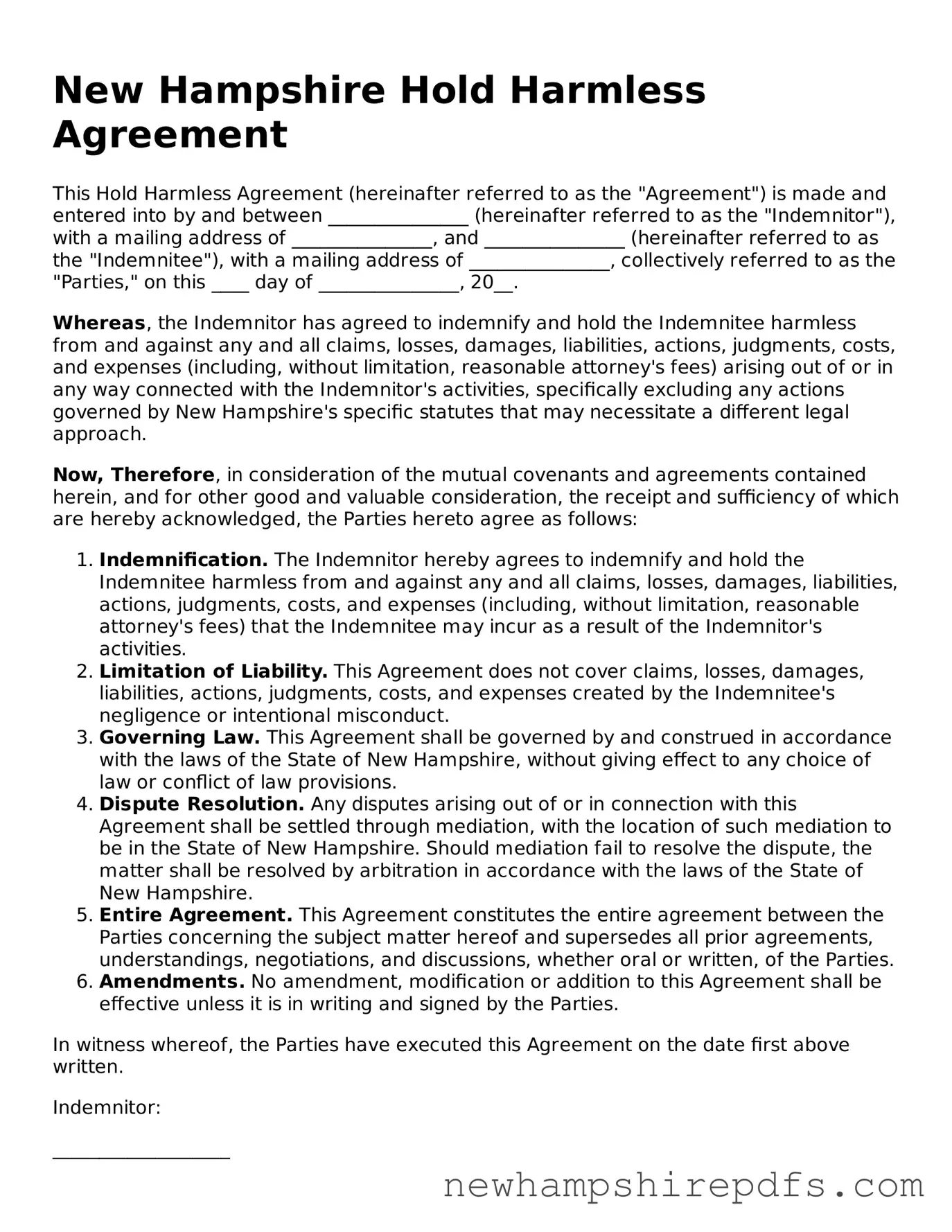What is a Hold Harmless Agreement in New Hampshire?
A Hold Harmless Agreement in New Hampshire is a legal document where one party agrees not to hold the other legally responsible for any injuries, damages, or losses that may occur during a specified activity or in a particular place. Essentially, it's a way to waive the right to sue in case of an accident or damage.
When should you use a Hold Harmless Agreement in New Hampshire?
This type of agreement is commonly used in situations involving some degree of risk, such as construction projects, special events, or any activity where one party wishes to shield themselves from liability claims. It's important to consider using it if you are organizing an event, offering a service, or engaging in any activity that involves potential physical or financial risk to participants.
Is a New Hampshire Hold Harmless Agreement legally enforceable?
Yes, a Hold Harmless Agreement is legally enforceable in New Hampshire, provided it is well-drafted, clear, and both parties fully understand and agree to the terms voluntarily. It needs to comply with New Hampshire laws and meet certain legal standards, including considerations for fairness and not covering negligent behavior.
How do you ensure a Hold Harmless Agreement is legally binding in New Hampshire?
To ensure a Hold Harmless Agreement is legally binding in New Hampshire, make sure it is in writing, clearly specifies the scope of activities and risks covered, and is signed by all involved parties. It's also wise to have the document reviewed by a legal professional who understands New Hampshire laws to avoid any enforceability issues related to vague or unfair terms.
Can you waive your rights to sue for all types of injuries with a Hold Harmless Agreement in New Hampshire?
No, while a Hold Harmless Agreement can provide broad protections against liability, New Hampshire law does not allow individuals to waive their rights to sue for incidents caused by gross negligence or intentional misconduct. The agreement must be reasonable and cannot cover scenarios where the protected party engages in reckless behavior leading to injury or damage.
Do both parties need to sign a New Hampshire Hold Harmless Agreement?
Yes, for a Hold Harmless Agreement to be valid in New Hampshire, both the party seeking protection (the indemnitee) and the party agreeing not to sue (the indemnitor) must sign the document. This ensures that both parties are aware of the terms and agree to them, which is essential for the agreement to be enforceable.
What happens if a Hold Harmless Agreement is breached in New Hampshire?
If a Hold Harmless Agreement is breached in New Hampshire, the aggrieved party may have legal grounds to pursue a claim for damages or any other remedies available under the law. The specific consequences of a breach will depend on the terms of the agreement and the nature of the breach, but could include compensatory damages and legal fees.
Can a Hold Harmless Agreement be modified after it is signed?
Yes, a Hold Harmless Agreement can be modified after it is signed, but any amendments must be agreed upon by all parties involved. It's best to make any modifications in writing and have them signed by all parties to ensure the changes are legally binding. This helps prevent disputes about the terms of the agreement.
